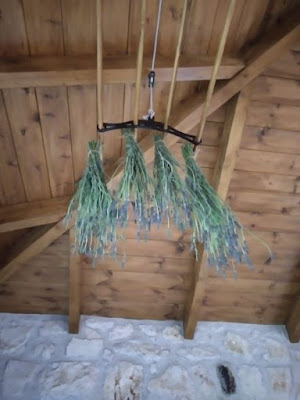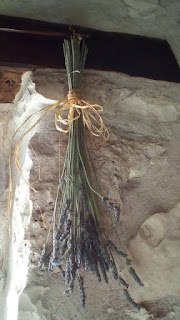You can never have too much lavender in your garden as its such a versatile plant.
Take cuttings; its a cheaper way of filling your garden with more plants.
1. Look for new growth sprigs that are coming from the older brown stem. Include part of the new brown stem when cutting.
2. Take off all the lower leaves 2/3 up the stem..

3. Insert directly into the pot of soil. Keep the soil moist but do not over water.
It may take some time for the roots to grow so be patient. (Siga siga!)
If you intend to use lavender for cooking use culinary lavender only. English Lavender varieties. (Lavendula angustifolia). Hidcote. Munstead and Lady.
Flowers, stem and leaves can be eaten dried or fresh.
Some culinary uses.
Grind lavender flowers, place in sugar and use for shortbread/cookies (my favourite).
Use the stems as fruit/shrimp kebab sticks and grill.
Infuse olive oil with dried lavender.
Infuse into cream or ice-cream.
Mix lavender, rosemary and mint. Rub onto lamb chops or chicken wings and BBQ.
Lavender Tea - (use flowers only) boosts mood and enhances calm. Visit www.cupandleaf.com
Its time to cut fresh lavender late spring/early summer. There is plenty of growing time left so there may be a chance of a second crop of flowers. Best cut early in the morning before the sun dries out the oils.
Tie into bunches with natural string and hang upside down to dry.(If they are left upright they will wilt and dry droopy.)
In the summer months we use our indoor airer/drying rack to dry our herbs.
Other uses
Tie with string and hang by a door or window, where there is a breeze, to dry out. Lavender repels insects such as moths, fleas, flies and mosquitoes.
Place a small bouquet on your bedside table - commonly used to relieve stress, anxiety and insomnia.
Make bouquets using net and ribbon and place in wardrobes and draws with laundry.
Use in natural homemade soap.
Make pretty lavender bags to give as gifts.












Comments
Post a Comment